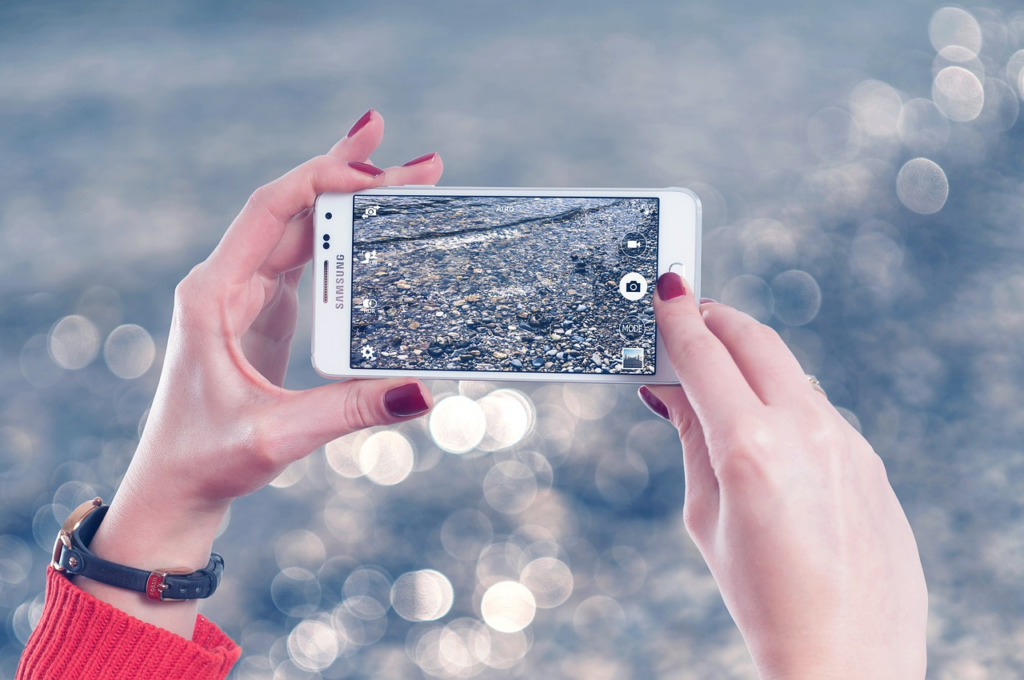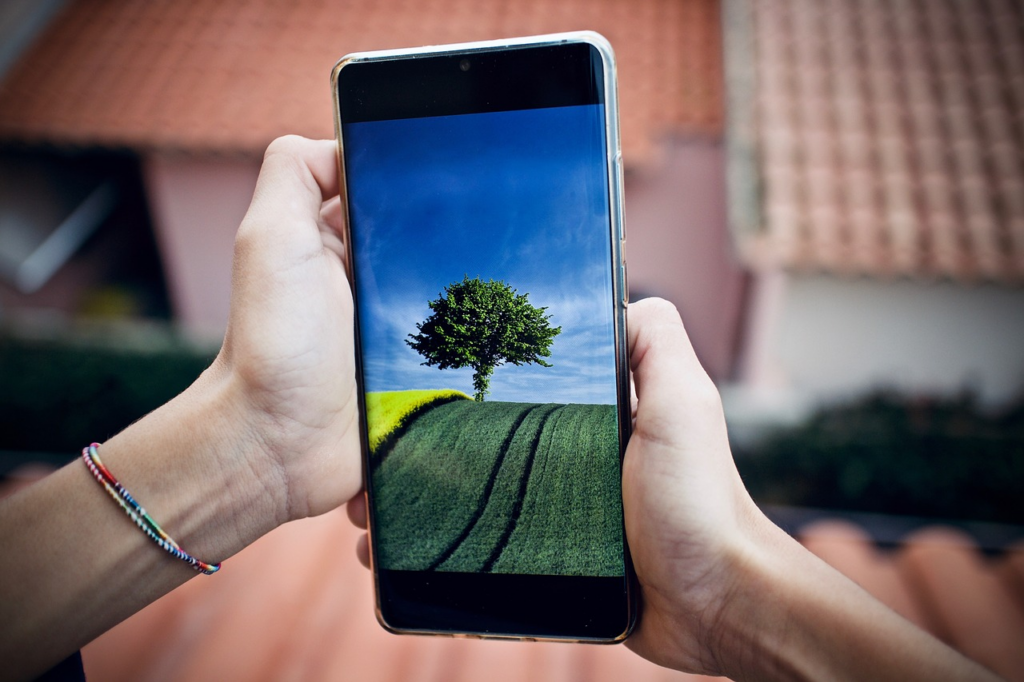Advertisement
Smartphone cameras have evolved considerably over the years, becoming one of the most important features for many consumers when choosing a new device. With so many options available on the market, it can be difficult to determine whether a cell phone's camera is really good or not. Fortunately, there are several tips and tricks you can use to assess the quality of your phone's camera before making a purchase.
How do you know if your phone's camera is good?
Photography has become an essential part of our daily lives, and the quality of a cell phone camera therefore plays a crucial role in the user experience. However, with a myriad of options available on the market, determining whether a cell phone camera is really good can seem like a challenging task.
Advertisement
In this quest for photographic excellence on our mobile devices, it is essential to understand the key elements that contribute to a quality camera.
1. Camera resolution
Camera resolution is often the first aspect that comes to mind when evaluating the quality of a cell phone camera. Measured in megapixels (MP), resolution refers to the amount of detail the camera can capture in a single image. Although it's tempting to believe that a camera with a higher resolution will automatically produce better quality images, the truth is a little more complex.
Advertisement
Resolution is just one of the factors that contribute to overall image quality. A camera with a high resolution can capture more detail, which is ideal for large format prints or extensive cut-outs. However, the quality of the lens, sensor and image processing also play a key role in determining sharpness, color accuracy and the ability to capture fine details.
In addition, it's important to consider how you intend to use the photos you take with your phone. If you mainly share images on social networks or view them on mobile device screens, an extremely high resolution may not be necessary. Instead, a camera with a moderate resolution, but with other solid quality aspects, may be more than enough for your needs.
On the other hand, if you plan to print your photos large or want the ability to make significant cut-outs without losing detail, a camera with a higher resolution may be a better choice.
2. Test shots in different lighting conditions
One of the most important features of a good cell phone camera is its ability to deal effectively with a variety of lighting conditions. After all, not all photos are taken in ideal light conditions, and a camera's ability to adapt to different lighting environments can make all the difference to the quality of the images captured.

By test shooting in different lighting conditions, you can evaluate various facets of the camera's performance. Starting with low-light environments, such as indoors with reduced artificial lighting or night scenes, you can observe how the camera copes with the challenge of capturing details in low-light conditions.
Next, try shooting in natural light, such as outdoors on a sunny day. This will allow you to evaluate how the camera handles the contrast between light and dark areas, as well as its ability to capture vibrant colors and sharp details in bright sunlight.
In addition, it is important to test the camera in environments with artificial light, such as indoors illuminated by lamps or fluorescents. These conditions can present unique challenges, such as accurately reproducing colors and minimizing the effect of "ghosting" or unwanted reflections in photos.
3. Testing moving pictures
One of the fundamental aspects of photography is the ability to capture moving moments with precision and clarity. For many smartphone users, the ability to take sharp pictures of moving objects is essential, whether it's to record sporting moments, pets playing or children in action. Therefore, when evaluating the quality of a cell phone's camera, it is crucial to carry out moving photo tests to determine its ability to capture blur-free images with sharp details.
When carrying out this test, choose a relatively fast-moving object and try to capture it in a series of photos. This could include people running, moving cars or animals in action. Observe how the camera handles the movement, whether it is able to freeze the object accurately or whether it results in blurred images.
A high-quality cell phone camera should be able to minimize motion blur and capture sharp photos even in dynamic situations. Features such as optical or electronic image stabilization can help reduce camera shake and guarantee sharper results, even in low light conditions or with fast-moving objects.
4. Check the camera's additional features
In addition to basic image quality, many smartphones come equipped with a variety of additional features in their cameras, designed to improve the user's photographic experience and offer greater versatility. When evaluating a cell phone camera, it's important to explore these additional features and understand how they can improve your photos in different situations.
One of the most common features found on modern smartphones is the scene mode. These modes allow the user to select a preset configuration that optimizes the camera settings for a particular type of scene or subject, such as landscapes, portraits, food or sunsets. These modes can help ensure proper exposure, white balance and color saturation for more impressive results in different photographic contexts.
Another popular feature is HDR (High Dynamic Range), which captures several exposures of the same scene and combines them to create a final image with a wider dynamic range. This can be especially useful in high-contrast situations, where there is a significant difference between the lightest and darkest areas of the scene. HDR can help preserve details in shadow areas and bring out highlights, resulting in more balanced and visually appealing images.
5. Evaluate the quality of photos at different focal lengths
When evaluating the quality of a cell phone's camera, it is essential to analyze how it behaves at different focal lengths. This is particularly important for smartphones that feature multiple lenses or offer optical and digital zoom. A camera's ability to maintain image quality at various focal lengths is crucial to guaranteeing consistently excellent results in a variety of photographic situations.
When testing shots at different focal lengths, start by trying the lens at the wide-angle or standard setting. This is the camera's main focal length and is generally ideal for capturing landscapes, group shots and general everyday scenes. Evaluate the sharpness, level of detail and color accuracy in photos taken with this setting, ensuring that the image quality is satisfactory even without the need to zoom.
Next, explore the camera's capacity at longer focal lengths, either through the use of optical or digital zoom. Take pictures of distant objects to assess how the camera copes with the increased magnification. Observe whether there is a significant loss of image quality as you approach the limits of the maximum zoom, especially in terms of sharpness, noise and color accuracy.
6. Search for reviews and expert opinions
When considering the purchase of a new smartphone with a high-quality camera, one of the best ways to make an informed decision is to research reviews and opinions from photography and technology experts. These experts take the time and effort to test a wide range of smartphones in a variety of photographic scenarios, providing valuable insights into the performance and quality of each device's cameras.
There are several reliable sources where you can find detailed smartphone camera reviews. Specialized technology sites such as The Verge, TechRadar, CNET and Engadget often carry out comprehensive smartphone reviews, including a section dedicated to evaluating camera quality. These reviews provide detailed information on the camera's resolution, additional features, performance in different lighting conditions and much more.
In addition, there are numerous blogs and YouTube channels dedicated exclusively to smartphone camera reviews. These content creators often carry out practical camera tests in various real-world situations, providing visual examples of photos taken with each device. This can help you visualize image quality in different conditions and get a better idea of how the camera performs in everyday use.

When reading reviews and expert opinions, it's important to consider a variety of sources to get a comprehensive view. Not all reviews will be consistent, and it's useful to compare different perspectives to get a more complete picture of a specific smartphone's camera performance.
How many megapixels does a good camera have to have?
Before we talk about specific numbers, it's important to understand what megapixels represent. One megapixel is equal to one million pixels, and the resolution of an image is determined by multiplying the number of pixels in the width by the height of the image. This means that a 12 megapixel camera, for example, captures images with a resolution of approximately 4000 pixels horizontally by 3000 pixels vertically.
For most people, a camera with a resolution of 8 to 12 megapixels is more than enough for everyday photography needs. This resolution range allows you to capture high-quality photos that can be printed in small to medium sizes, shared on social networks and viewed on mobile device screens without any problems.
However, if you plan to print your photos in large sizes, such as posters or frames, or if you need more flexibility to crop and enlarge specific parts of the image, a camera with a higher resolution may be desirable. In these cases, a camera with 16 megapixels or more can offer a significant advantage in terms of resolution and detail.
It is important to note, however, that simply increasing the number of megapixels does not automatically guarantee better image quality. Other factors, such as the quality of the lens, image sensor and image processing, play an equally important role in determining the overall quality of the camera.
How many megapixels does 4K have?
4K refers to a video resolution and not to the megapixel count in a still image. In the context of video, 4K has a resolution of 3840 pixels wide by 2160 pixels high, which results in an image with around 8.3 megapixels (3840 x 2160 = 8,294,400 pixels). Therefore, a camera that records in 4K resolution is capturing video with a very high pixel density, which results in an extremely sharp and detailed image.
Research and guarantee quality
While an 8 to 12 megapixel camera is generally adequate for most everyday photographic needs, a camera with 16 megapixels or more may be preferable for those who require a very high resolution or plan to print their photos in large sizes. However, it is important to consider other aspects of camera quality, in addition to megapixel count, when assessing the suitability of a camera for your specific needs.
Determining whether a cell phone camera is good involves more than just checking the resolution. It's important to carry out practical tests in different lighting conditions and shooting situations, as well as exploring the camera's additional features. By combining these tips with online research and expert reviews, you'll be better equipped to make an informed decision when choosing your next smartphone.
See also: 10 apps to password-protect your apps and ensure more privacy
March 29, 2024

She has a degree in Languages - Portuguese/English, and is the creator of the Escritora de Sucesso website. As a writer, she seeks to expand everyone's knowledge with relevant information on various subjects. At SoMuchToSayToday, she brings news and content ranging from entertainment to the country's economic situation.


